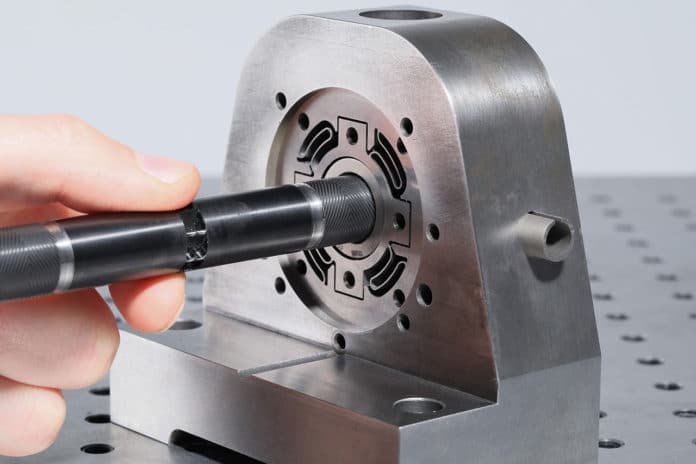The narrow groove theory was proposed in 1965 by J. H. Vohr and C. Y. Chow, two engineers at New York-based Mechanical Technology, Inc. The theory explains the working of herringbone grooved journal bearings, or HGJBs – a type of air-lubricated bearing that supports rotating parts in mechanical systems.
Many different types of bearings exist, but HGJBs hold the most promise for developing ultrahigh-speed rotating machines because the rotor is supported on a cushion of air generated by the rotating shaft.
The Narrow Groove Theory (NGT) is commonly used to simulate and design grooved gas bearing. However, measurements of dynamic force coefficients of Herringbone Grooved Journal Bearings (HGJBs) is missing, hence the validation historic NGT has never been performed, despite its importance.
A new study by EPFL has closed a gap that has persisted in the scientific literature for over 50 years.
To approve the narrow groove theory, the scientists mounted a rotor bolstered by a few HGJBs on a test rig, setting it spinning at 100,000 rotation per minute. Next, they used a shaker system to vibrate the rotor and observed how it responded. The observations enabled scientists to calculate the bearings’ stiffness and damping coefficients. They found that NGT tended to overestimate both values marginally.
Eliott Guenat, a doctoral assistant at EPFL and the paper’s lead author, said, “We were able to quantify the extent to which the theory holds. Now that we’ve shored up our understanding, we can take the theory and apply it in industry and research in new ways.”
Scientists are now planning to conduct more experiments to take further measurements.
“Instead of using air-lubricated bearings, we’ll rerun the experiment with refrigerant, a gas used in heat pumps. The idea is to confirm that the theory holds not just in the air, but also in a medium with markedly different chemical and physical properties.”
The team has published its findings in the journal Mechanical Systems and Signal Processing.
